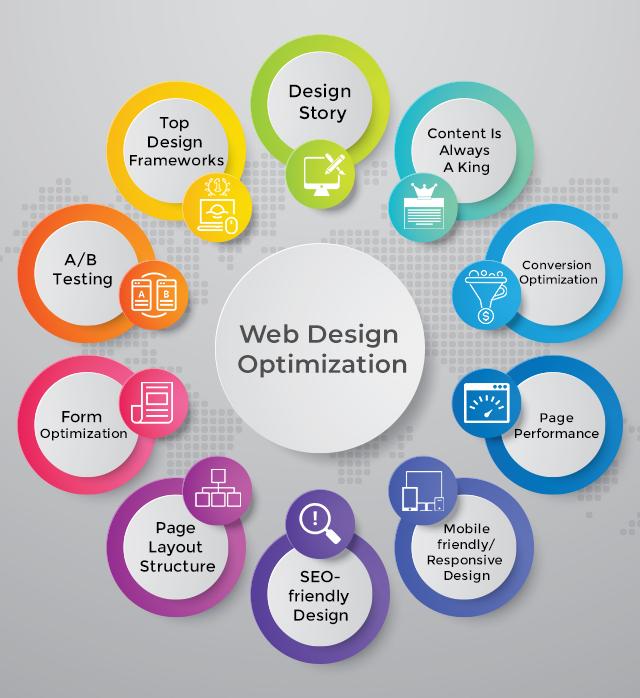
What are the Key Factors for Success in eCommerce Website?

E-commerce is the future of business and with the rise of 4G/5G mobile technology, easy access to the internet and data, improvement in education level, and improved trust in online business had propelled E-commerce.
E-Commerce is an important part of today’s economy, surpassing $5.2 trillion in e-retail sales worldwide in 2021, and this figure is only expected to reach new heights in the coming years.
In 2021, ecommerce accounted for nearly 19% of retail sales worldwide. In fact, according to Statista, the online segment will make up close to a quarter of total global retail sales by 2026. These figures show that e-commerce is here to stay.
Further, in the time of COVID-19 where social distance is imperative, e-commerce and m-commerce came out as a solution and lifesavers.
But e-commerce is not only limited to Amazon, Flipkart, and Myntra only, you can also begin the same. E-commerce websites like Amazon can be very profitable businesses. However, they are also full of pitfalls for new or inexperienced entrepreneurs. How do you build a successful e-commerce site from scratch?
It takes planning and lots of hard work to create a quality e-commerce website. The key to creating a successful website is to ensure that every aspect has a clear purpose. Here are three things you should consider before starting your next e-commerce project. Let's check out the most important success strategies of an e-commerce website.
The 7 Important Key Success Factors in eCommerce Website
Here are some of the most important key factors for success in e-commerce:
- Optimize Website Design
- SEO
- Create a Good Content Strategy
- What do we want our customers/visitors to know about us?
- How will we promote ourselves?
- Which audiences do each piece of the content target?
- In what format(s) will we distribute the information?
- Who owns, creates, edits, and curates the content?
- Where will we host the content?
- Will we write articles, blog posts, social media posts, etc.?
- Ease of Navigation
- Responsive Design
- User-friendly Interface
- Easy Accessibility
- Customer Service
- Product Quality
- Social Media Marketing
- Shipping Services

Source:- nmgtechnologies
When making your website look professional, keep design aesthetics in mind. If your website looks good, it will likely encourage more sales. You can accomplish this by using clean fonts, simple colours, and easy-to-use navigation options. Keep things simple! Don't try to overcomplicate things.
According to Google search engine results page (SERP) optimization, the number one ranking factor is having a clear, concise web design. A clean, crisp web design makes it easier for users to find what they’re looking for without being distracted by other content or distractions. Users will not have to scroll down or click around trying to figure out what your site offers if your website layout is well-designed and organized.
A good example of a well-designed web design includes navigation with simple text links and images that lead them directly to their targeted landing pages. You want to make sure that your visitors don't get lost or confused while navigating your site.
Another tip for optimizing your web design is to use a font that's legible and large enough to read easily on any screen size. Your customers should be able to read everything on your site easily and understand everything on your site easily. No matter how small or big your fonts are, it's still a great idea to keep them readable.
There are many tools online that can help you create a custom CSS style sheet for your website like WYSIWYG editor. This type of web design program lets you drag and drop elements onto your webpage. You can also take advantage of HTML 5 tags. These tags allow you to add videos, maps, forms, and other interactive features to your web pages.
In addition, you'll need to optimize the performance of your website by including external JavaScript libraries. These libraries speed up your website's loading time and enable your site to load faster than ever before. If you don't optimize your website, you could lose traffic, which means fewer sales. Read some important ecommerce website design best practices and tips to build an attractive ecommerce website and boost sales.

Source:- reliablesoft
Search engine optimization (SEO) is definitely a factor to think about when coming up with an e-commerce strategy. When search engine spiders crawl your site, they can get a sense of what information your page contains and determine whether or not it matches search queries. SEO works by making sure that your web pages rank highly on search results pages. To achieve this goal, you need to write unique meta descriptions for your product pages. These descriptions help Google know exactly what each individual page is about. Another SEO tactic is to integrate keywords throughout the text of your webpage. You can also create internal links between different pages on your site to improve your ranking further. SEO in eCommerce is the best tactic to increase traffic to your website. Some eCommerce SEO strategies can help to get a better ROI score for your business.
Having a search engine-friendly URL will improve your rankings on search engines. An SEO-friendly URL is a URL that contains keywords related to your products or services in order to increase your visibility.
If you do not already know what keywords to use, you can use keyword research tools. There are keyword research tools available free of charge on the internet. Using these tools, you can enter your domain name and get detailed information about what words are popular and relevant to your business. Keyword research tools will give you a list of terms with high search volume and low competition.
You can use these keywords to build a successful marketing campaign. When building your campaigns, try to incorporate a combination of both long-tail and short-term keywords. Long-tail keywords generally rank higher, whereas short-term keywords tend to drive traffic more effectively.

Source:- moz
Try to use customized content for your website as per your brand, products, and services. You can increase the value of your web pages by providing additional details about them. Give away useful information like prices, facts, statistics, etc.
A content strategy sets out how you want your brand to communicate across different platforms and channels – including digital-only. So what should you cover? Your products, services, pricing, customer service, and everything else make your business unique.
When developing your content strategy, consider these questions and objectives:
Make sure you have a clear idea of who your audience is. You may need to segment your data and create separate persons based on their interests, age, gender, location, and behaviour. Once you understand your audience, you can start planning what kind of content they might find helpful.
Create a plan of action for your content marketing. Include goals, targets, date ranges, metrics, and KPIs (key performance indicators). Also, keep track of any content success stories as well as failures. Learn from them to improve the quality of future content.
Start testing! Before launching a fully developed campaign, test several versions of your content to make sure it converts visitors into buyers and drives engagement. Look at analytics, user feedback, and traffic patterns to determine whether your strategies are working.

Source:- puma
The first thing people notice about any website they land upon is its navigation. If a user cannot find what he/she was looking for without much effort, then they are likely to leave the site immediately. A good website should have clear and simple navigation menu options that enable users to move around the site easily. Users should be able to understand where they currently are, how to reach the desired destination, and how to navigate back again if they want to return. Also, make sure that links are clearly visible and clickable. A well-designed navigation menu makes it easier for users to locate information quickly and efficiently.

Source:- designmodo
A responsive design means that your website's content and layout adapt themselves depending on the size and type of device being used to view it. This helps keep your visitors engaged and interested, as their devices' screens automatically adjust according to their preferences and their viewing environment. Additionally, websites built using responsive design tend to load faster than those not responsive.
Recommended read:- 9 Ecommerce Website Design Best Practices With Examples

Source:- productimize
To ensure that your visitor enjoys his experience, make sure your website has a clean and attractive interface. Make sure that each page is organized logically and that the user doesn't get lost while navigating through the site. You can use colour and typography to guide the user through the site.

Source:- searchenginejournal
Make sure that your website can be accessed by people easily. Include alternative text descriptions in images, captions, and headings. Use Alt tags for image descriptions to make it search engine friendly. Provide accessible options for contact forms, subscription forms, etc.

Source:- timebusinessnews
Customer service should be one of the key factors in eCommerce success and at the forefront of any business, especially online. Customers spend their money with companies based on how responsive they are after purchasing their products or services. Companies that have customer service issues are going to lose customers, thus losing revenue, and eventually closing down shop.
A great way to ensure you have excellent customer service is to make sure you communicate well with your customers. Make sure your customer service team is trained enough to handle any customer questions or concerns. Also, never hesitate to ask for feedback about your customer experience. When people feel valued and appreciated, they are willing to continue doing business with you.
Recommended read:-How To Improve Customer Experience In E-Commerce Website?
Another thing to consider while coming up with a key factor for the growth of e-commerce sites is ensuring that you provide high-quality products. Your customers expect nothing less than excellence, and if you don't give them what they want, they won't buy from you again. You can do this simply by putting yourself in your customer's shoes; asking what types of products they would like to purchase, and then providing only those items to them. In order to ensure you offer high-quality products, make sure your products are safe, effective, and reliable.

Source:- yourstory
Social media marketing is an extremely powerful tool for promoting your business. One of the best ways to promote your products is via social media sites like Instagram, Facebook, Pinterest, and Twitter. By posting interesting content, you'll attract potential customers, who will then visit your website. By following these steps, you're sure to increase the success rate of your e-commerce store. Social media marketing for ecommerce helps to promote your business on different social media platforms.

Source:- parcellab
Shipping costs can be quite expensive and frustrating for shoppers. Therefore, if you're looking for ways to reduce shipping costs, you may want to look into offering international shipping services. As long as you charge enough for shipping rates, you could potentially save yourself thousands of dollars. Make sure you note this point in the list of key factors for success in e-commerce, because it actually matters a lot for your customers.
eCommerce store owners can use our extensions for offering different shipping costs to create an easy shopping experience like shipping table rates and shipping calculator.
Let’s Summarize the Major eCommerce Website Success Factors
We hope these key factors of promoting e-commerce make your site easier to navigate, help increase conversions, allow search engines to better index your site and rank highly, promote your e-commerce site and increase the success rates.
